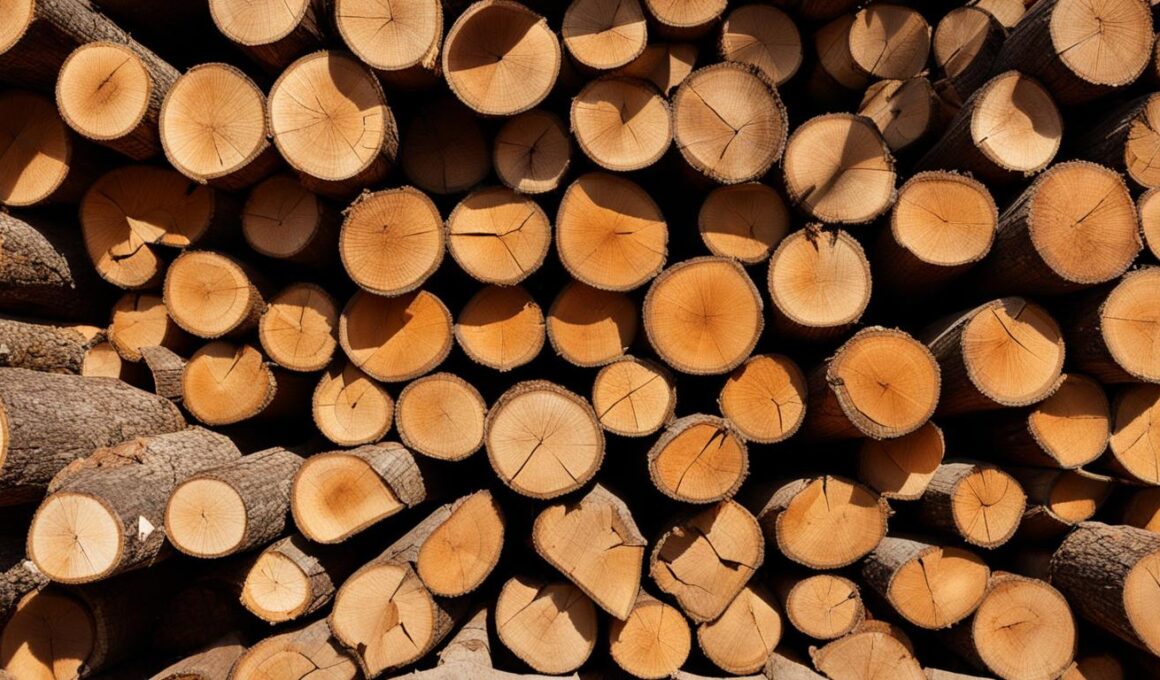Are you considering using elm firewood to keep your home cozy and warm during the winter? Elm can indeed be a suitable option for burning, although it may not provide the same heat output as hardwoods like oak and hickory. Let’s explore the burn quality of elm firewood to help you make an informed decision.
Elm Firewood Burn Qualities
When it comes to choosing firewood, understanding the burn qualities of different types is essential. Elm firewood, known for its unique characteristics, offers a balance between heat output and burning properties.
Elm firewood provides a moderate heat output compared to other common firewood types. With approximately 20.0 BTUs per cord, it falls between softwoods like pine and top hardwoods like oak and beech. While it may not offer the same high heat output as hardwoods, elm is still a suitable choice for keeping your home warm during the colder months.
One significant advantage of elm firewood is its smoke level. When fully seasoned, elm emits a moderate amount of smoke. While it’s better than softwoods, such as pine, it’s not as clean-burning as hardwoods like ash or maple. However, with proper seasoning, the smoke level can be minimized.
One factor to consider when using elm firewood is the ease of splitting. Elm is notorious for being difficult to split, often requiring a chainsaw or hydraulic splitter. Its dense nature and interlocking grain can make it challenging for manual splitting.
When it comes to safety, elm firewood is a reliable option. It produces minimal sparks during burning, reducing the risk of fire hazards. This makes elm a suitable choice, especially if you have a fireplace or wood-burning stove in an enclosed space.
While some firewood types have a pleasant aroma when burned, elm is not known for its fragrance. In fact, elm wood tends to absorb the smells of its surroundings, which can be a drawback for those seeking a fragrant ambiance.
Elm firewood has excellent coaling properties, forming long-lasting and robust coals. These coals contribute to the longevity of fires and make the wood a good choice for overnight burning or extended heating needs.
Another advantage of elm firewood is its low sap levels. The reduced sap content contributes to a lower risk of creosote buildup in chimneys, reducing the need for frequent maintenance and cleanings.
Overall, Elm firewood offers a moderate heat output, minimal sparks, and excellent coaling properties. However, it can be challenging to split, and the aroma may not be as pleasant as other firewood options. With proper seasoning, elm firewood can provide a reliable and efficient source of heat for your fireplace or wood-burning stove.
Elm Firewood Varieties
When it comes to firewood, elm offers several varieties that are commonly used. These include American elm, Red elm, and Siberian elm. Each variety has its own unique characteristics and burning properties.
American elm is a popular choice for firewood, although it has a slightly lower BTU (British Thermal Units) compared to Red elm and Siberian elm. This means it may not produce as much heat as the other varieties. Additionally, American elm can be harder to split, requiring more effort when preparing it for burning.
On the other hand, Red elm, despite being an invasive species, offers a higher BTU and is easier to split. This makes it a desirable option for those looking for firewood that provides a good amount of heat and is easier to work with.
Siberian elm is another variety that stands out. It has a higher BTU than American elm and is known for having a better smell when burned. However, it’s important to note that the quality of elm wood can vary, so it’s important to choose carefully and ensure the wood is properly seasoned.
All elm varieties require a long seasoning time of at least 12 months. This process is crucial in reducing the sap and resin content of the wood, minimizing the smoke produced when burning. It’s worth mentioning that fully seasoned elm wood emits a moderate level of smoke and has a distinct, somewhat strong smell.
So, whether you opt for American elm, Red elm, or Siberian elm, remember to give your chosen firewood ample time to season and be prepared for the unique characteristics of elm wood, including its lower BTU, longer splitting time, moderate smoke levels, and intense smell.
Can Using Pine Wood for Firewood Pose Health Risks?
Using pine wood for firewood can potentially pose health risks, similar to the risks of pine needle tea. When burned, pine wood releases chemicals and resins into the air that can be harmful when inhaled. It’s important to consider alternative firewood options to minimize potential health hazards.










